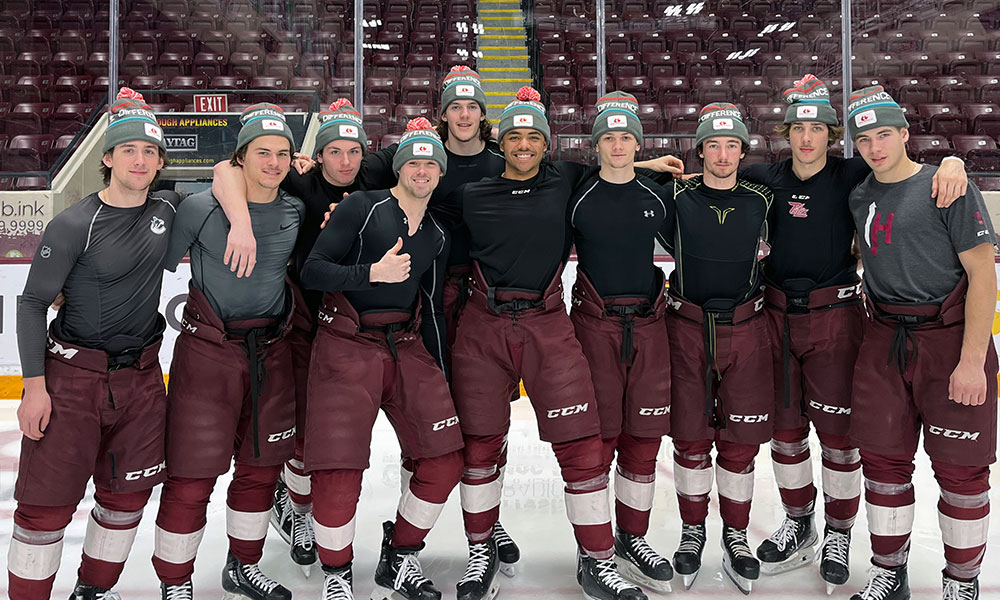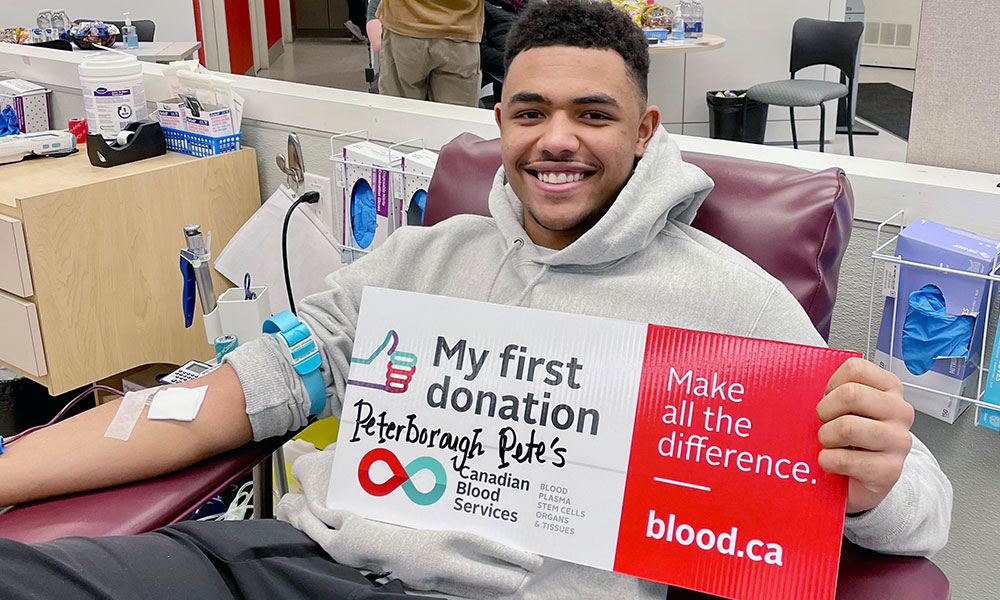‘We could all help save someone’s life’

Donovan McCoy, a Hockey Gives Blood player ambassador, rallied his teammates to #BeAHero and join the stem cell registry
Did you know that when a patient needs a stem cell transplant, they are most likely to find a matching donor within their own racial or ethnic group? Or that currently, most prospective stem cell donors are white? These facts hit home for Donovan McCoy, an 18-year-old defenseman with the Ontario Hockey League’s Peterborough Petes.
As a person of mixed ethnicity, with Jamaican roots on his dad’s side, Donovan couldn’t help but think of his own family.
“I have five siblings, and I can’t imagine what it would feel like if any of them needed a stem cell donation and there was no matching donor,” he says.
But he also saw a chance to help. Earlier this month, Donovan joined Canadian Blood Services Stem Cell Registry and encouraged 18 of his teammates to do the same. The event was part of the #BeAHero campaign, an annual effort by Canadian Blood Services and one of our largest Partners for Life teams, Hockey Gives Blood to recruit potential stem cell donors.
“We all knew it was an important thing, and that we could all help save someone’s life, potentially,” says Donovan, who is enjoying his first season as a Hockey Gives Blood player ambassador.
What are stem cells?
Stem cells, specifically blood stem cells, are immature cells that can develop into any cell present in the bloodstream. When a patient requires a stem cell transplant, it is typically for a condition that is life-threatening. Yet the majority of those seeking a matching stem cell donor will not find one within their own families. These are the patients who turn to the stem cell registry, in the hope of being matched with a healthy volunteer donor like Donovan.
Joining the stem cell registry is easy
Donovan signed up during a stem cell registry recruitment event, but you can request a free registration kit be delivered to your home. Simply swab the insides of your cheeks with the materials provided and send the sample to us by mail. It’s free and totally painless, and that small sample can be analyzed for the DNA markers used to spot a potentially lifesaving donor-patient match.
To join the stem cell registry, you must be between the ages of 17 and 35.

Young stem cell donors make all the difference
Once you’ve joined the stem cell registry, you could be matched to a patient at any time. And the younger you are when you register, the more hope you can bring to patients. Those who join may be asked to donate stem cells at any time up until age 60, though transplant physicians around the world tend to select younger stem cell donors to achieve better transplant outcomes.
“For the little work I’d have to do to save someone’s life, I’d do it a thousand times over if I could,” says Donovan. “I can put aside my little fear of needles.”

It's true that if Donovan gets that call to help, he’ll need to brace himself for a few needles. But chances are he won’t need any kind of surgery.
The most common method of donating stem cells is called “peripheral blood stem cell” donation. Before donation day, the donor receives injections to stimulate the release of stem cells into the blood stream. The donation itself is very similar to the process for donating plasma or platelets, though it takes longer. The donor normally spends four to six hours connected to a machine with a needle in each arm. The machine draws blood from one arm, removes the stem cells, and returns the remaining blood components back to the body through the other arm.
Only about one in five stem cell donors are asked to donate bone marrow in a one-day surgical procedure.
Regardless, kind of like hockey, Donovan has an opportunity to train for the big day. He recently donated blood for the first time with his teammates and hopes to keep going.
“We’re all really excited to be able to help out.”



